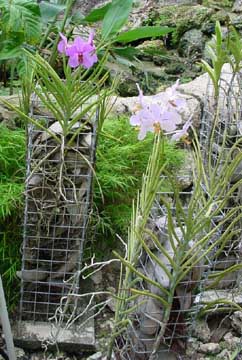
Orchids are noted for their beautiful, long-lasting flowers, widely differing in shape, size and colour. They belong to the family Orchidaceae, which comprises over 600 genera, 30000 species and thousands of man-made hybrids.


Orchids have varying habitats but epiphytic orchids dominate the trade. They are also classed as monopodials (stems having a vertical growth, non-branching, with aerial roots) and sympodials (stems having a horizontal growth, producing pseudobulbs in clusters, no aerial roots).
The ideal location for orchid growing is in the open conditions, under appropriate level of shade nets. In Kerala it is also grown under the shade of coconut trees above 10 years old.
Most attractive orchids belong to the group of epiphytes, which require free moving air at all times. The orchid plants produce aerial roots, which absorb water and nutrients from the atmosphere. Both terrestrial and epiphytes grow under varying levels of shade. Plants grown under deep shade will have good vegetative growth and poor flowering. Hence shade and light regulations are very important operations for better flowering. This requirement varies with the species and varieties. Some species grow in open sunlight. A humid and warm atmosphere is congenial for the growth of most of the tropical orchids. Better results are obtained when the atmospheric humidity is 50 to 80%. Orchids require proper temperature for good growth and flowering. Accordingly there are tropical, subtropical and temperate orchids.
